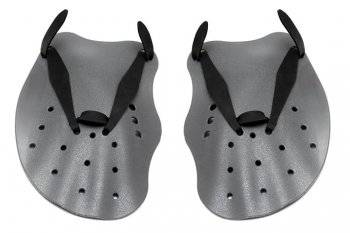After taking two weeks off from swimming due to a sore shoulder, I'm feeling pretty good and ready to resume on Monday. I found this article interesting. Of note, it says the freestyle crawl and back stroke are hardest on your shoulders.
Although I'll resume with less laps than the normal 50, I plan on starting with 20 laps and working up. It's also possible Although I swam 50 laps for a year, maybe I should be swimming less, maybe 40 laps to avoid injury?
Because of this issue, I'm considering changing the total number of free style and backstroke laps I was doing which before totaled up to 38 out of the 50 laps. The interesting thing is that I've felt that the backstroke is more of a casual stroke for me, but I wonder if this is actually true or it's just as hard on your shoulder as the crawl is?
My normal work out was a mix of 3 sets of ten- 2 side stroke, 4 crawl, 2 backstroke, and 2 breast stroke. As the second and fifth set, I'd swim 10 laps of crawl, total 50 laps. Now based on this article although I feel I'm getting the best exercise when swimming crawl, I'm thinking it might help if I do no more than 50% crawl and back stroke combined. Something like 5 sets of 4 sidestroke, 4 crawl, 2 breast.
Thoughts from young or elderly swimmers?
Swimming After A Shoulder Injury
How should I swim?
When deciding what is the best way to swim we must look at what is the most biomechanically sound position and motion for the upper extremity given our anatomy. The four swimming styles are freestyle, backstroke, butterfly, and breast stroke. No matter which stroke is performed they all require repetitive motions of the arms. Additionally, in free style and back stroke the top of the arm bone is more likely to come into contact with archway in which the tendons aggravated by an impingement injury pass prolonging the injury. Breast stroke is typically seen as best because the arms stay under the water and there is no overhead motion while still a repetitive activity. Furthermore, free style, back stroke, and butterfly require the upper extremity to lift out of the water requiring greater muscle forces and putting the arm into a higher risk position as it extends behind the body. Swimming is a full body activity! The more you use your core and legs the less work will fall on the shoulder joint- this is an easy way to tailor the swim to your current needs. Do be cautious however if you have a knee injury and want to try breast stroke.
Although I'll resume with less laps than the normal 50, I plan on starting with 20 laps and working up. It's also possible Although I swam 50 laps for a year, maybe I should be swimming less, maybe 40 laps to avoid injury?
Because of this issue, I'm considering changing the total number of free style and backstroke laps I was doing which before totaled up to 38 out of the 50 laps. The interesting thing is that I've felt that the backstroke is more of a casual stroke for me, but I wonder if this is actually true or it's just as hard on your shoulder as the crawl is?
My normal work out was a mix of 3 sets of ten- 2 side stroke, 4 crawl, 2 backstroke, and 2 breast stroke. As the second and fifth set, I'd swim 10 laps of crawl, total 50 laps. Now based on this article although I feel I'm getting the best exercise when swimming crawl, I'm thinking it might help if I do no more than 50% crawl and back stroke combined. Something like 5 sets of 4 sidestroke, 4 crawl, 2 breast.
Thoughts from young or elderly swimmers?
Swimming After A Shoulder Injury
How should I swim?
When deciding what is the best way to swim we must look at what is the most biomechanically sound position and motion for the upper extremity given our anatomy. The four swimming styles are freestyle, backstroke, butterfly, and breast stroke. No matter which stroke is performed they all require repetitive motions of the arms. Additionally, in free style and back stroke the top of the arm bone is more likely to come into contact with archway in which the tendons aggravated by an impingement injury pass prolonging the injury. Breast stroke is typically seen as best because the arms stay under the water and there is no overhead motion while still a repetitive activity. Furthermore, free style, back stroke, and butterfly require the upper extremity to lift out of the water requiring greater muscle forces and putting the arm into a higher risk position as it extends behind the body. Swimming is a full body activity! The more you use your core and legs the less work will fall on the shoulder joint- this is an easy way to tailor the swim to your current needs. Do be cautious however if you have a knee injury and want to try breast stroke.



